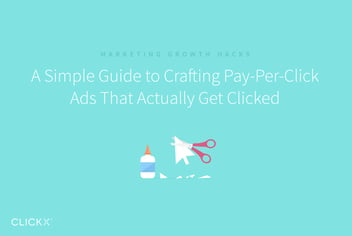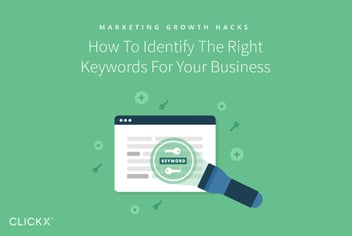3 Tips for Making Your Small Business PPC Ads Budget Stretch Further
Pay-Per-Click (PPC) advertising—when executed correctly—can be the cornerstone of revenue generation for virtually any type of business. Handled poorly though, it can be a black hole in terms of budget and quickly spiral out of control.
In this article, we’ll look at three simple tactics to get things right straight out of the gate and help your overall PPC budget stretch further: geo-targeting, day-parting, and correct campaign structure.
Get these dialed in early and you can look forward to better click-through rates and budgets that last longer and deliver more results.
Let’s get cracking!
1. Always Use Geo-Targeting
The architecture of the web makes it possible to get incredibly specific and target very precise groups of users geographically. Bing, Google, Facebook, and Twitter all support geo-targeting. They can target your ads to whole countries, areas within a country like cities or counties, or even a defined geographical radius around a location.
While the vast majority of ad platforms allow for geo-targeting, they will also all happily let you cast your net far and wide and potentially waste thousands in the process—that’s why narrowing down your geographic reach is so crucial.
Even if your target audience is genuinely multinational, you’ll still want to limit your targeting or ad providers can, and will, publish your campaigns as widely as possible. Regular monitoring of campaign metrics in terms of reach and conversions are the key here but make sure you’re using geo-targeting from the start.
[Tweet “Optimizing your PPC ads helps stretch your ad budget further. Take advantage of geo-targeting and day-parting.”]
2. Take Advantage of Dayparting and Scheduling
Ad scheduling and dayparting should be an option in any ad platform worth its salt so make sure you’re taking advantage of them to maximize the effectiveness of your ads.
If you’re running a bricks-and-mortar business and the expected result of the ad is that someone feels compelled to visit your premises, schedule ads for peak times and dates when you’re definitely available.
Also, look to schedule ads for peak times and dates when your customers are online. Fast Company reports that Facebook and Twitter usage peaks between 1-4pm on weekdays. That’s the time people are hitting an afternoon “slump” at work and tend to slack off with a little browsing and product research. This can be a potential sweet spot for displaying your ads.
Platforms such as Google AdWords and Bing Ads also provide sophisticated keyword tools you can use to research when certain keywords are searched and what’s driving traffic to your site. Set up a custom report with keywords and times as criteria to really drill into the data.
You should also account for seasonality. Many already over-burdened small business owners simply set up an ad and let it run all year long without considering seasonality. User intent and buying behavior will be strongly seasonal in a huge range of businesses, however. Do a little research to see how much that applies to your own campaigns and then adjust spending and scheduling accordingly.
You’ll also want to keep an eye on the competition. During peak times, your ads are in competition with other ads in bidding for valuable keywords. Rather than constantly bidding high for those keywords, you’ve also got the option of adjusting your budget to target opportunities at specific times. Again, a little time spent in analysis can reap dividends in terms of budget effectiveness here.
3. Start with the Correct Campaign Structure
As your ad inventory increases so does overall complexity in managing campaigns so you want to start with the right structure or things get tricky fast.
The perfect setup will vary by business but look to keep your campaign structure organized by product lines, categories, website sections, or whatever makes the most sense for your particular setup.
Group your ads into blocks of related keywords, ads, and bids. Grouping ads makes it much easier to compare two similar ads’ performances to find what works best via split-testing (also known as A/B testing). Split-testing is a potentially huge help in optimizing overall performance so anything that helps facilitate it is to be encouraged. Check out our A/B testing guide for more info in this regard.
Also, remember that not all websites need ads targeted for everything. Sometimes you just need to boost sales of a particular item or service. Use clearly defined campaign structure to get super specific and make sure your budget is firmly targeted at where it can deliver the most value.
Bonus Tip: Use the Power of Tracking Parameters
Detailed campaign analysis is the key to maximizing budget effectiveness so proper tracking is a must. You can set this up easily with a little help from Google’s URL Builder form.
For example, if you’re running a Bing campaign, enter bing in the Campaign Source field and cpc in the Campaign Medium field. In the Campaign Name field, you’d then enter something like bingadscampaign. Click Generate URL and you’ll get a URL like this:
http://example.com/?utm_source=bing&utm_medium=cpc&utm_campaign=bingadscampaign.
These values will then be automatically picked up in Google Analytics and you can use them to really drill into conversion data by campaign and channel. This feature can be automatically enabled in Google Adwords but you may need to build your own parameters for other platforms.
Further Advertising Resources
Our suggestions above are just the tip of the iceberg when it comes to really stretching your budget—ongoing optimization is the way to go. Here is a breakdown of further useful resources per advertising medium for you to explore in more detail.
Facebook Ads
Twitter Ads
- A New Way to Optimize Campaign Performance with Twitter Ads
- Tips to Optimize a Followers Campaign
- Drive Website Clicks or Conversions
Bing Ads
- Search Engine Optimization for Bing
- Bing Webmaster Guidelines
- Getting Started: Optimize Your Campaign
Google AdWords
- Overview of Essential Tips to Improve Your AdWords Results
- Optimize Display Network Ads and Campaigns
- AdWords Fundamentals: Exam Study Guide – Optimize Your Campaign
Conclusion
Making the most of your budget is key when it comes to building campaigns that consistently deliver results over time and the optimization never ends. Getting off to the right start is essential. Let’s recap the budget-stretching tips we covered:
- Always use geo-targeting.
- Take advantage of scheduling and dayparting.
- Get your campaign structure right from the beginning.
- Use the power of tracking parameters.
We’d love to hear your thoughts on making the most of those advertising dollars. Do you have any tips or tricks to share? Get in touch via the comments and let us know!






